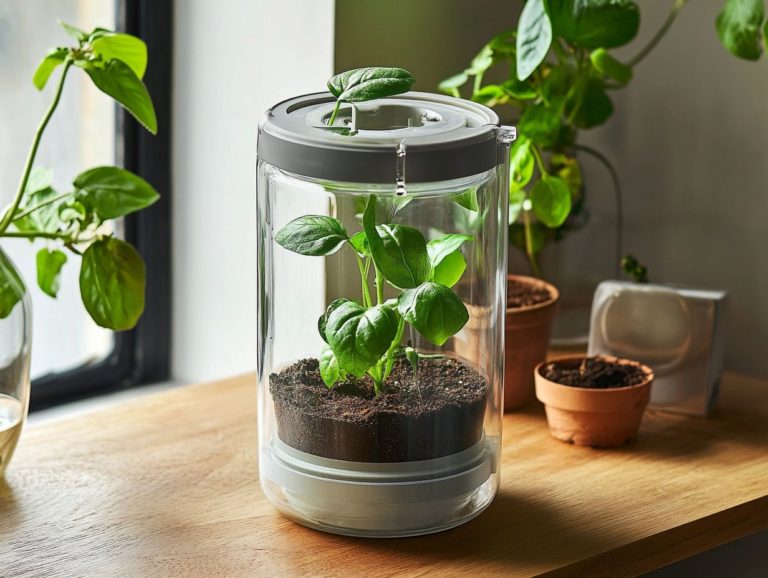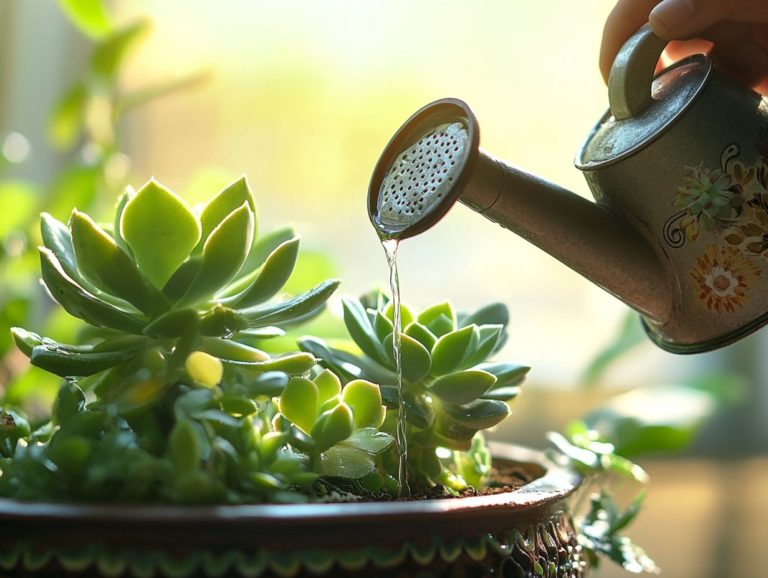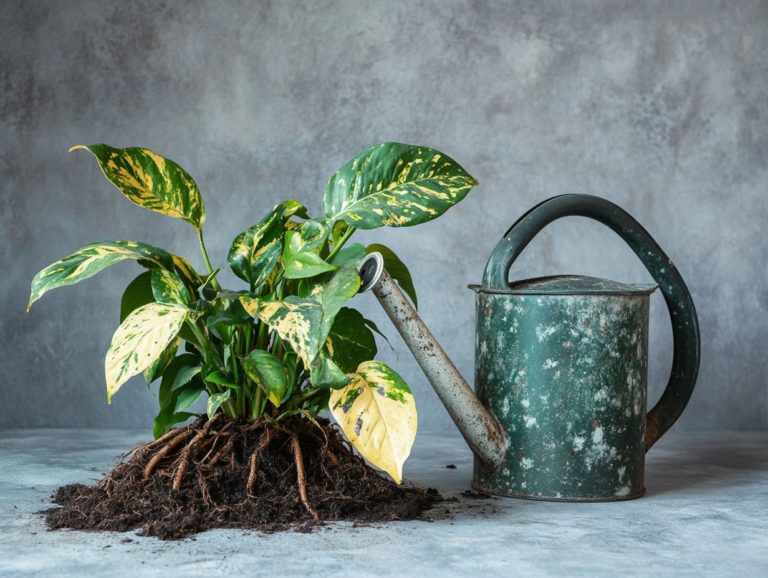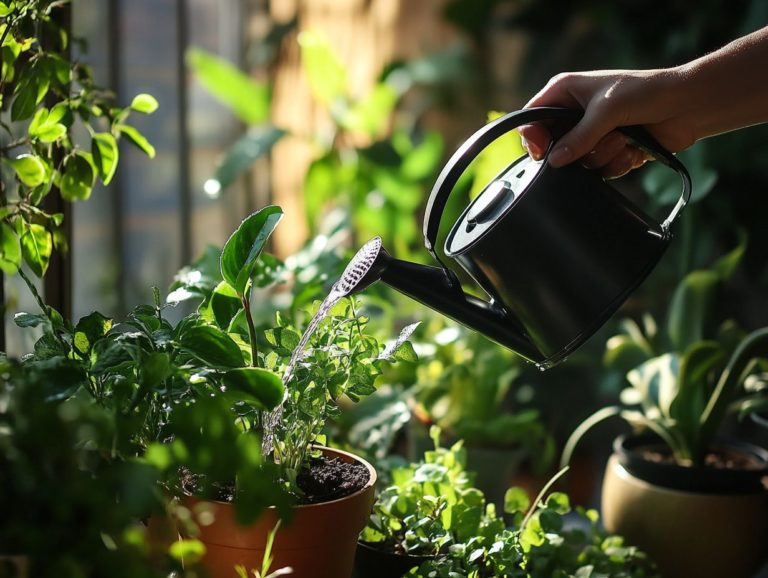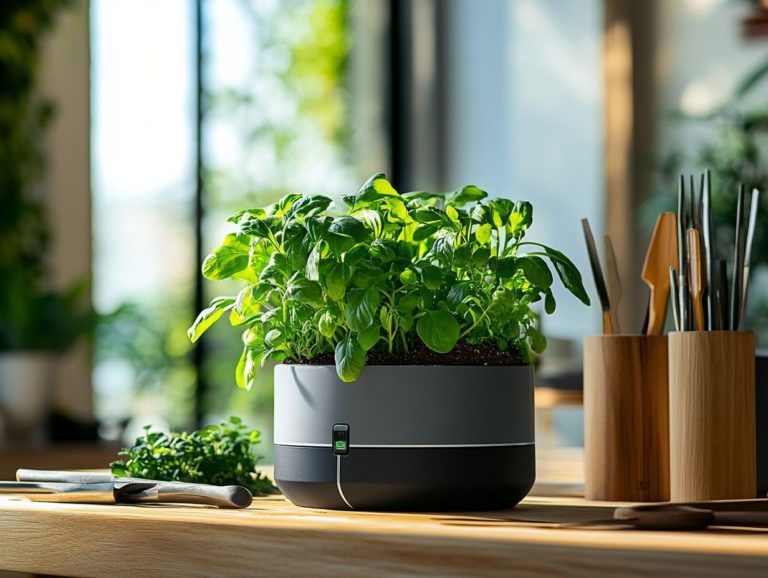Understanding Evaporation in Watering
Evaporation is a vital component of the global water cycle and is essential for both plant and soil health.
This discussion delves into the intricacies of evaporation and its impact on watering practices. We will examine the environmental factors and human-made practices that influence this essential process.
Discover effective strategies to minimize water loss! Explore useful tools for measuring evaporation and transpiration processes.
Join us as we uncover the significance of evaporation in gardening and agriculture, empowering you to ensure your green spaces flourish.
Contents
Key Takeaways:

- Evaporation is the process of water turning into gas and escaping into the atmosphere.
- Understanding evaporation is crucial for maintaining healthy plants and soil, affecting the water available for growth and survival.
- Environmental and man-made factors such as temperature and wind greatly impact the rate of evaporation. Implementing strategies to reduce evaporation helps conserve water resources.
What is Evaporation?
Evaporation is the process where liquid water transforms into gas specifically, water vapor through the exchange of energy. This transformation occurs at various temperatures and is key to understanding the global water cycle, which sustains Earth’s ecosystems.
In environments like sugar beet fields in Borger, Netherlands, evaporation aids in water uptake and the release of water vapor from plants. This contributes to atmospheric dynamics that shape weather and climate patterns.
Definition and Explanation
Evaporation is the fascinating process where liquid water turns into water vapor, primarily driven by energy from sunlight and atmospheric conditions. Water molecules at the surface gain enough kinetic energy to break free from the liquid’s cohesive forces.
Temperature plays a crucial role; as it rises, so does the average kinetic energy of the molecules, affecting the rate of evaporation. Atmospheric pressure also influences this process; lower pressure accelerates evaporation as fewer molecules press down on the liquid surface.
Relative humidity dictates how much moisture is already in the air. High humidity slows evaporation, while low humidity promotes it, creating a balance that is essential for this process.
The Role of Evaporation in Watering
Evaporation is vital for watering your plants, as it directly influences the moisture content in the soil and supports the transpiration process essential for plant health.
In agricultural settings like the sugar beet fields in Borger, the balance of evaporation significantly affects water availability and the overall well-being of crops. This process not only sustains plant life but also plays a key role in the hydrologic cycle, ensuring effective water uptake and distribution.
How Evaporation Affects Plants and Soil
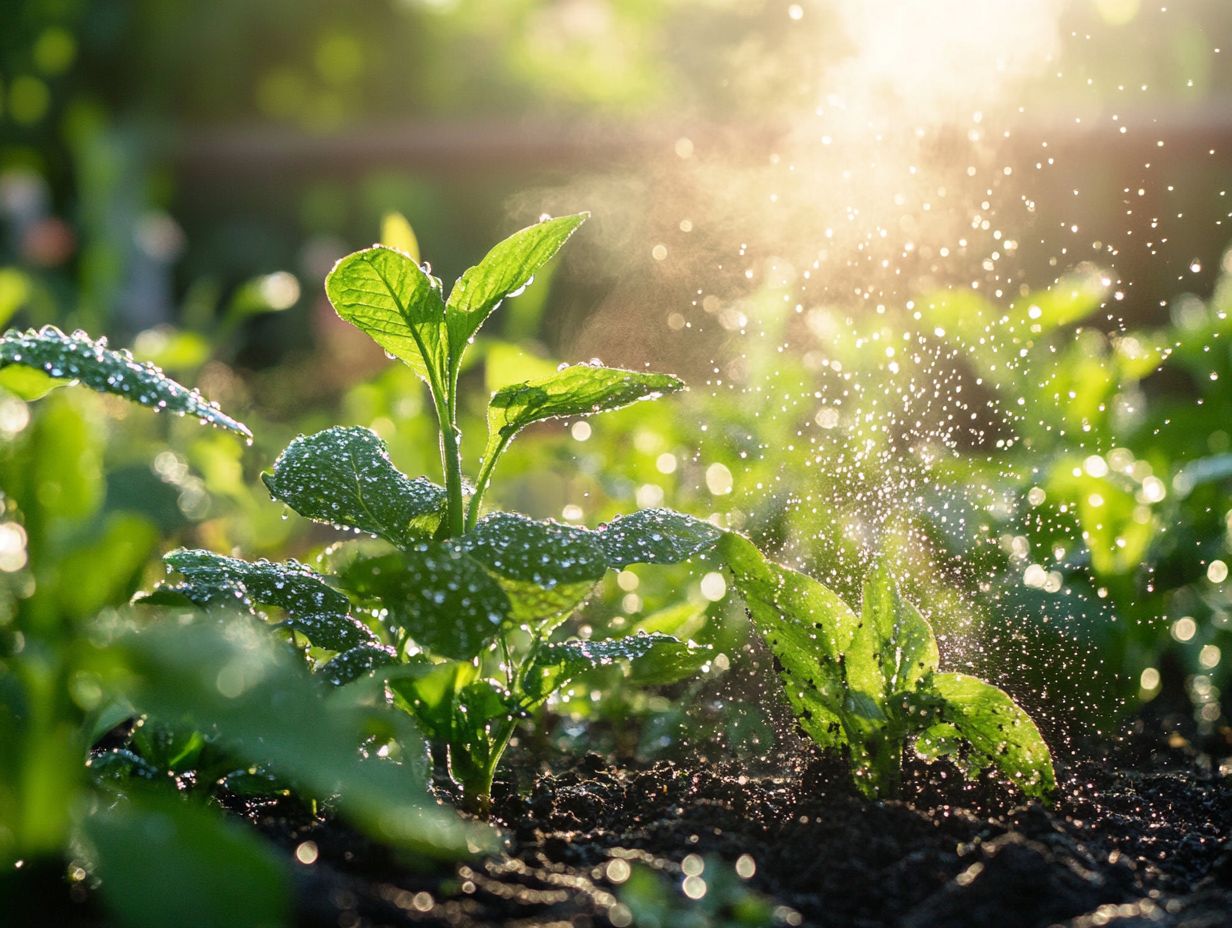
Evaporation regulates the moisture content of plants and soil, which is vital for optimal water uptake and the transpiration process. When moisture levels are just right, plants can absorb water efficiently through their roots.
This efficient absorption facilitates the transportation of nutrients and enhances soil health. As plants release water vapor through their stomata, they create a cooling effect, helping to maintain a favorable microclimate.
On the other hand, insufficient evaporation can lead to waterlogged soils, hindering root respiration and promoting harmful bacterial growth. Striking the right moisture balance is essential for sustaining robust ecosystems.
In conclusion, understanding evaporation is crucial for effective gardening and agriculture. By managing this vital process, you can ensure your plants receive the moisture they need to thrive!
Factors Affecting Evaporation
Many factors affect how quickly water evaporates. Key players include temperature, atmospheric pressure, and humidity levels. Together, these elements shape the efficiency of the water-to-vapor transformation.
Understanding these factors is key to seeing how evaporation connects to the global water cycle and impacts ecosystems.
Environmental and Man-made Factors
Evaporation is influenced by both environmental factors and human activities. Climate, weather, land use, and irrigation all play significant roles.
For example, as temperatures rise due to climate change, you may notice increased evaporation rates, which can worsen water scarcity in agricultural systems that depend on consistent moisture. Additionally, changes in land use like deforestation or urbanization can alter local microclimates and disrupt the natural water cycle.
Efficient irrigation practices can mitigate evaporation loss, ensuring your crops receive the hydration they need. This highlights the dual role that human intervention plays in managing water resources and fostering sustainable agricultural practices.
Strategies to Reduce Evaporation
To address evaporation challenges, you can use effective strategies to reduce water loss in agriculture and the environment.
By understanding moisture content and employing techniques for managing water vapor, you can make a substantial difference in your water conservation efforts.
- Mulching
- Optimizing irrigation methods
- Selecting plant species that are more resistant to evaporation
These strategies can greatly enhance your conservation efforts.
Ways to Minimize Water Loss
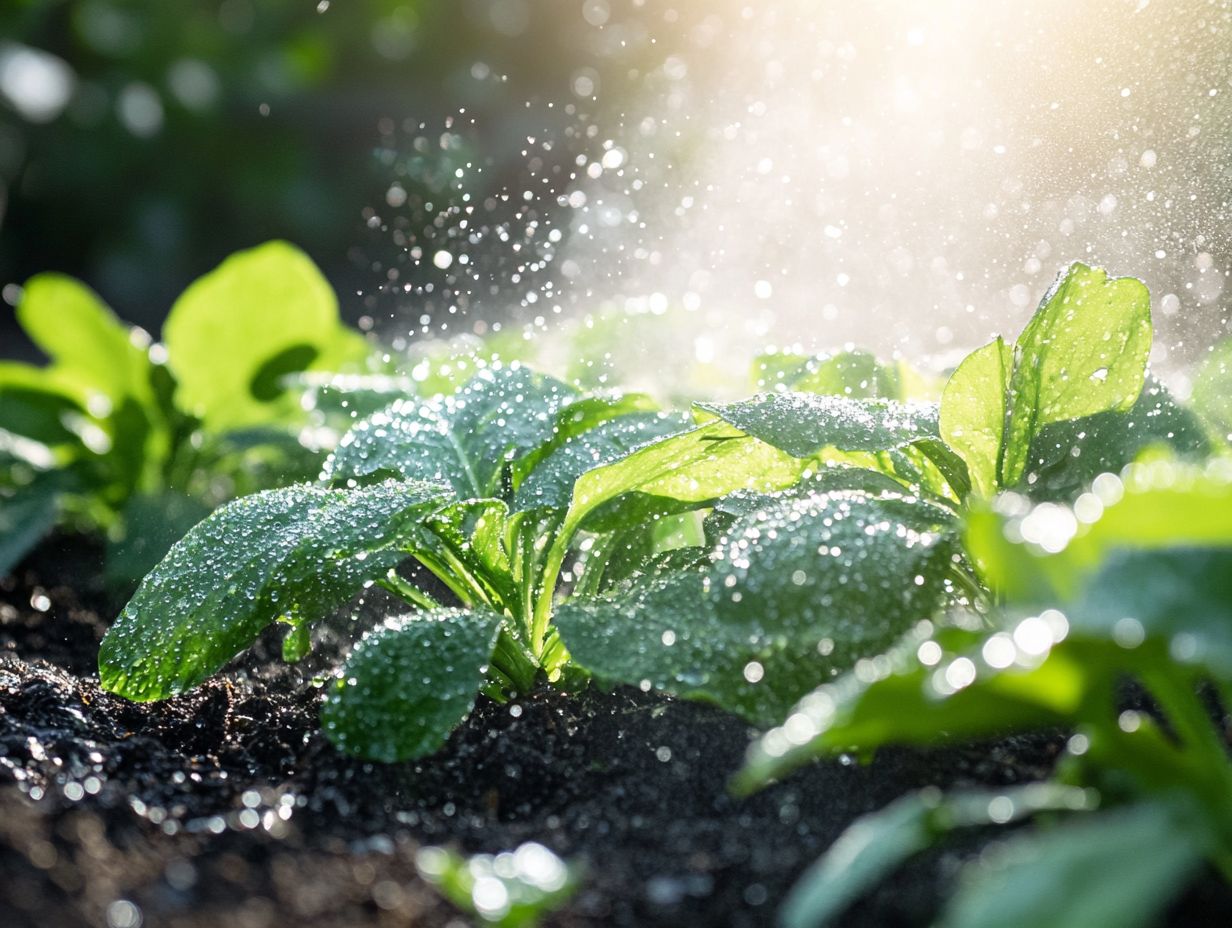
You can minimize water loss by using strategies like mulching, optimizing irrigation, and choosing drought-resistant plants. These techniques work together to conserve invaluable water resources and enhance soil health.
For instance, mulching creates a protective layer that lowers surface temperatures and limits direct sunlight exposure, effectively slowing evaporation rates. Efficient irrigation practices, like drip systems, deliver water straight to the roots of your plants, ensuring optimal moisture retention without waste. Understanding the role of soil in watering is also crucial for maintaining healthy plants.
By incorporating drought-resistant plants, you can cultivate landscapes that thrive even under limited water availability, further promoting sustainability. Altogether, these approaches foster an interconnected ecosystem, creating a resilient environment that adapts seamlessly to shifting climatic conditions.
Measuring Evaporation
Measuring evaporation is vital to understanding water dynamics in ecosystems. Tools like lysimeters and eddy covariance systems help accurately assess evaporation rates.
Instruments such as lysimeters and eddy covariance systems enable researchers to quantify evaporation and its impact on soil and plant physiology. This data is invaluable for both environmental studies and agricultural practices, offering insights that can drive sustainable decision-making.
Tools and Techniques for Measuring Evaporation
You ll find a variety of tools and techniques available for measuring evaporation, such as lysimeters and eddy covariance. Each offers distinct insights into this complex evaporation process and its impacts.
Take lysimeters, for example. These instruments measure water loss from soil, collecting precise data by tracking the weight loss of soil over time. This illuminates aspects of water retention and plant interactions across different ecosystems.
On the flip side, eddy covariance systems employ advanced tools to monitor the exchange of water vapor and heat between the land surface and the atmosphere. They deliver real-time data that enriches your understanding of microclimate conditions.
These methods enhance scientific inquiry and are vital in practical applications like agriculture and water resource management. They enable you to make informed decisions in the face of climatic variability.
Frequently Asked Questions
What is evaporation?
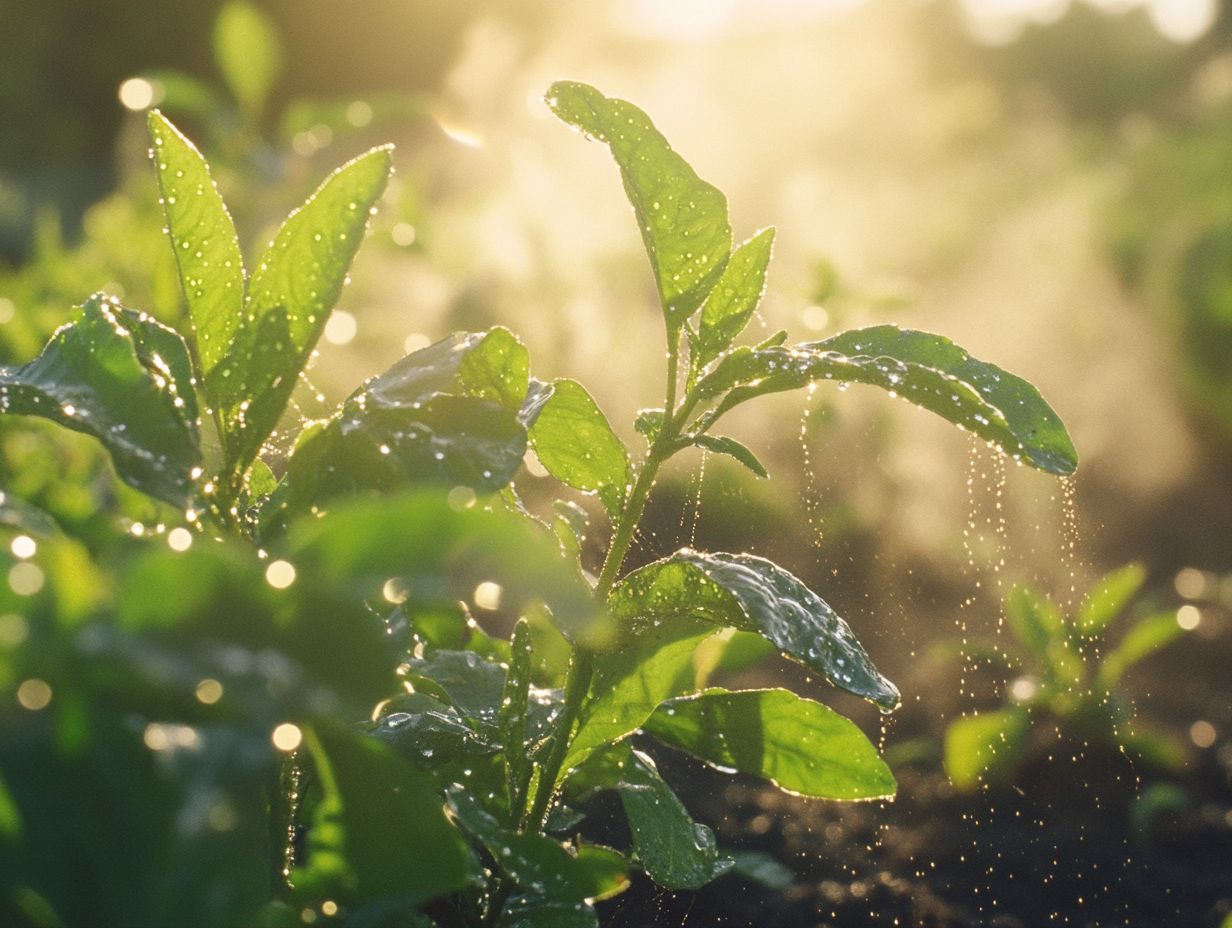
Evaporation is the process by which a liquid, such as water, changes into a gas, such as water vapor. It occurs when the molecules of the liquid gain enough energy to overcome the attractive forces between them and escape into the air, thus initiating the vaporization phase change.
How does evaporation occur in watering?
When watering plants, the water on the surface of the soil or leaves evaporates into the air. This leaves behind the water that is absorbed by the plants’ roots.
This process is vital for plants to absorb water through their leaves’ stomata.
What factors affect the rate of evaporation in watering?
The rate of evaporation can be influenced by various factors, such as temperature, humidity, wind speed, and the surface area of water exposed. Higher temperatures, lower humidity, and faster wind speeds can lead to increased evaporation.
A larger surface area of water can also increase the rate. This process is crucial in the global water cycle.
Why is understanding evaporation important in watering?
Understanding evaporation is essential to thriving plants and vibrant gardens! It helps determine the amount of water needed for plants.
Overwatering can lead to water wastage and potential damage, while underwatering can result in stunted growth and wilting. By understanding evaporation, we can ensure that plants receive just the right amount of water.
How can I reduce evaporation in watering?
To reduce evaporation, water plants early in the morning or late in the evening when temperatures are lower. Water directly at the base of the plant, avoiding getting water on leaves or the surrounding soil.
Using mulch can also help retain moisture, reducing evaporation.
Can evaporation be reversed in watering?
No, evaporation cannot be reversed. Once water has evaporated into the air, it cannot be retrieved. However, by understanding the factors that affect evaporation, we can implement strategies to minimize water loss and ensure proper watering for plants.
Now that you understand evaporation, apply these insights to keep your plants healthy and thriving!
Illustration showing the evaporation process.

